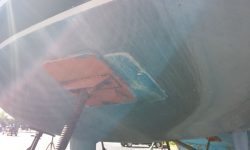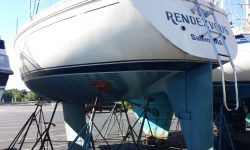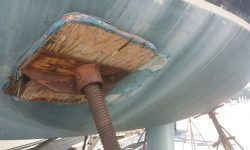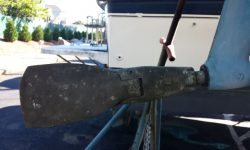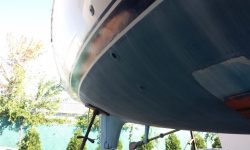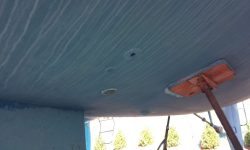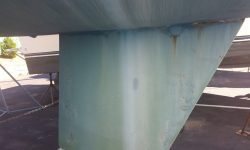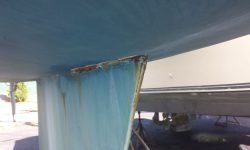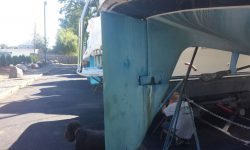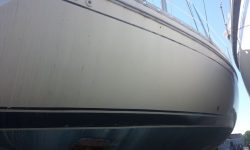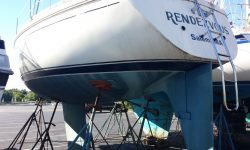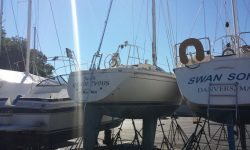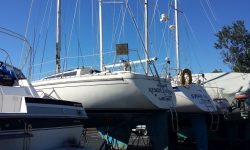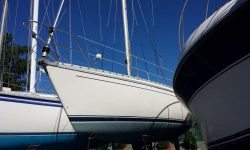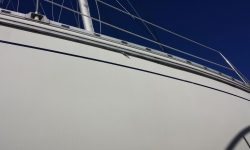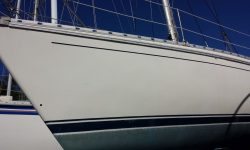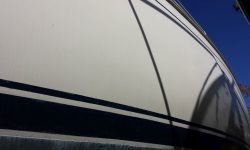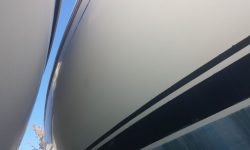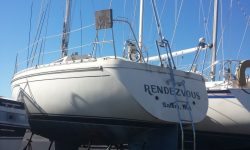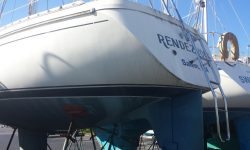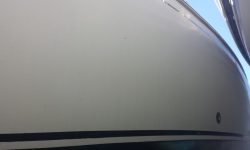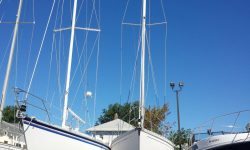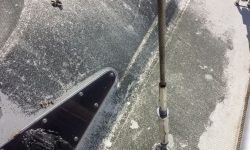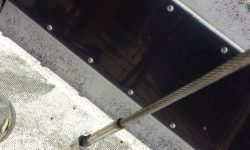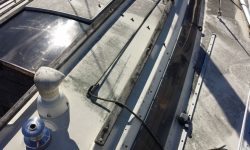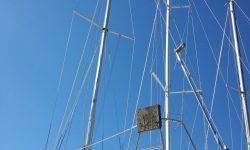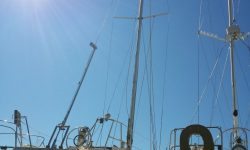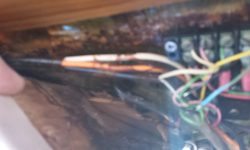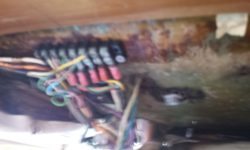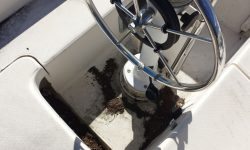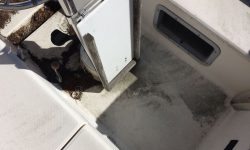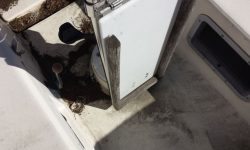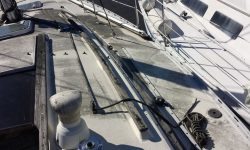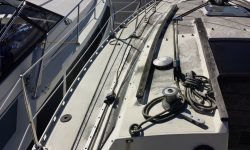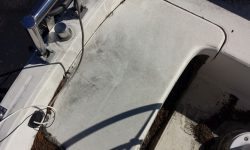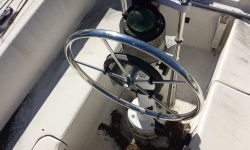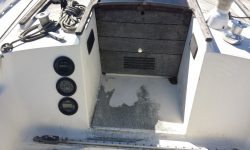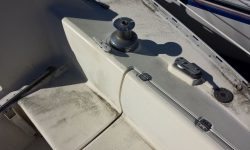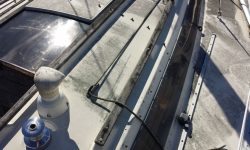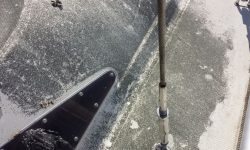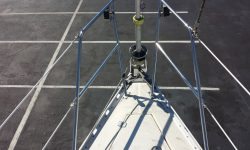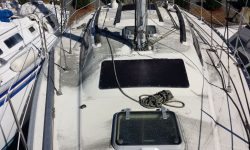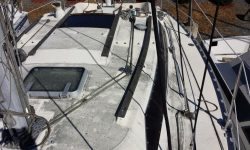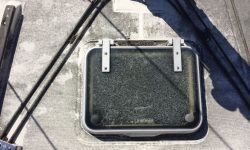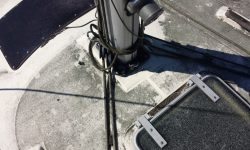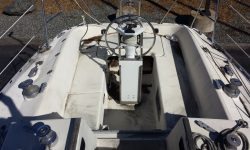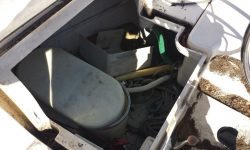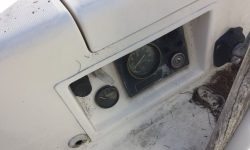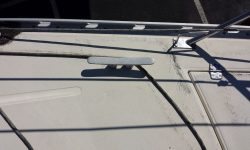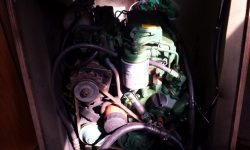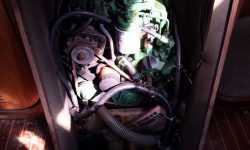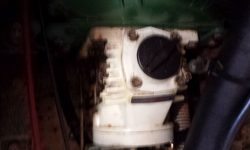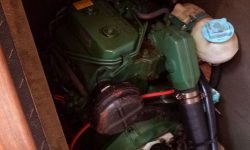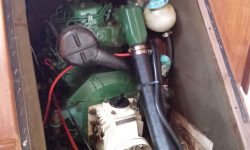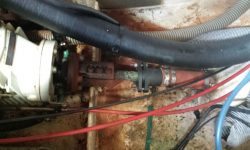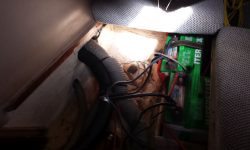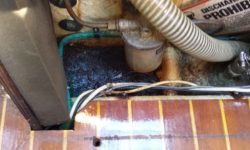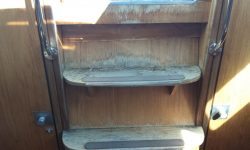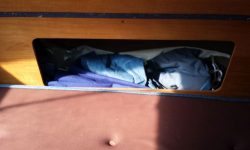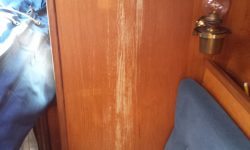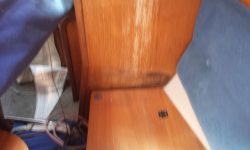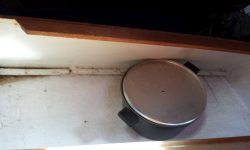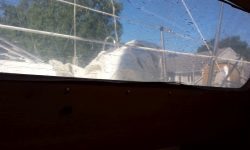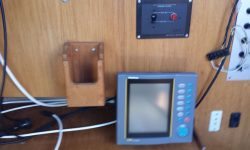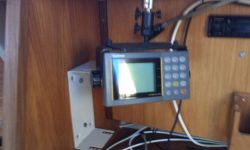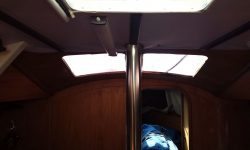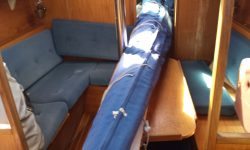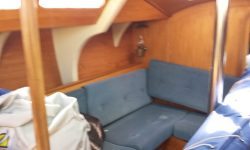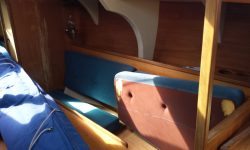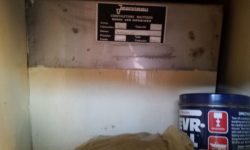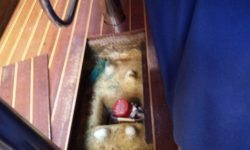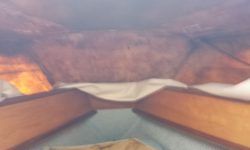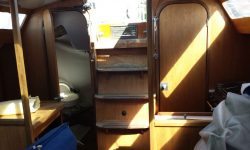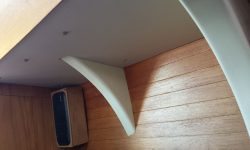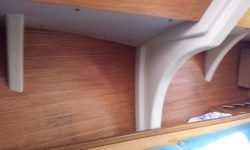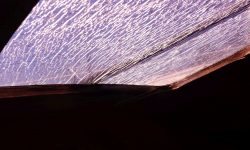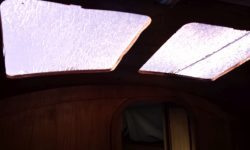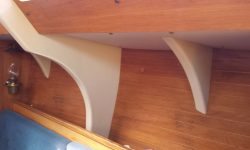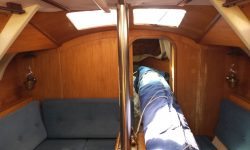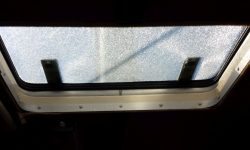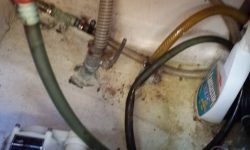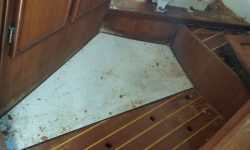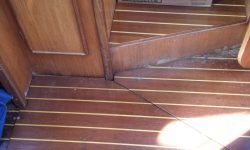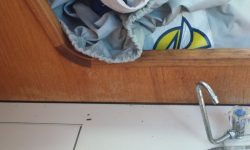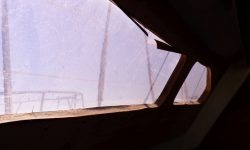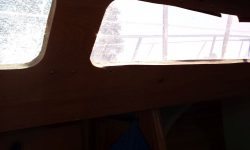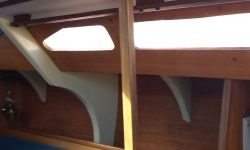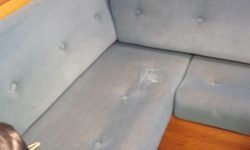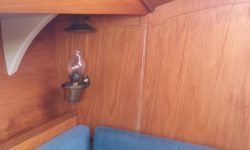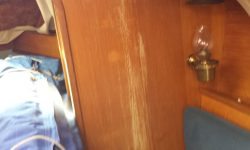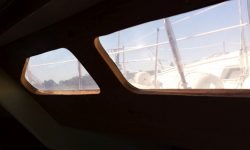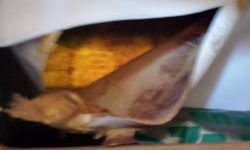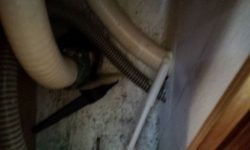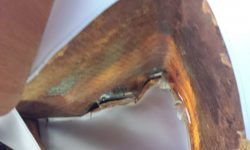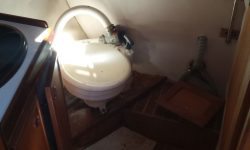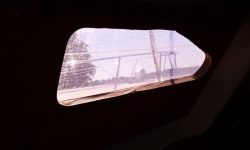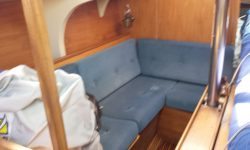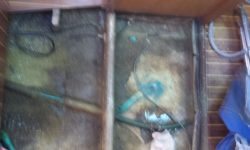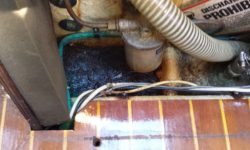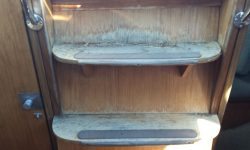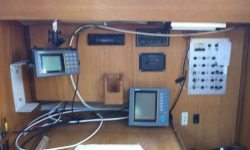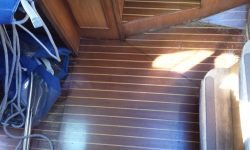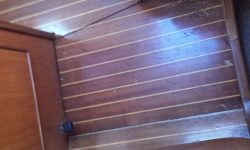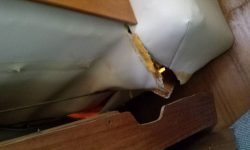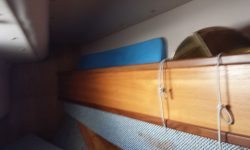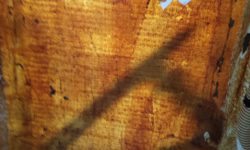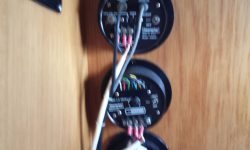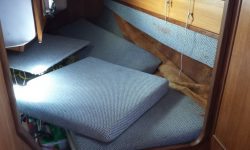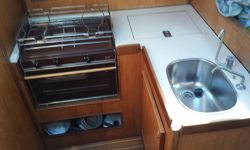Bottom
The bottom is in good shape overall, with several areas to point out.
The boat’s long storage on the hard has (as per usual) created dimples in way of the jackstands. These have been moved recently, but the depressions in the hull are noticeable. These depressions typically return to their original hull contours once the pressure is eased and the stands’ placement moved, but these areas require inspection throughout the process.
The rudder, like most of its construction type, contained moisture or even standing water at one point. This has led to the cracking seen at the bottom edge during the freeze/thaw cycles. The boat has reportedly been on the hard for 12 years, and the rudder may have dried and drained completely in this time. This is a typical condition and not necessarily a major and immediate structural concern, but additional attention and inspection is prudent.
The iron ballast keel (external) looked generally sound, with normal cracking at the keel-hull seam and only a slight amount of visible corrosion.
Through hulls looked to be in fair condition and all valves that I noticed tested operational. None of these installations is an ideal through hull/seacock installation and replacement is recommended.
Topsides
The topsides appear to be original gelcoat in good condition considering its age and neglect. Very dirty in places. The boottop has been painted numerous times and is in fair to poor, but sound, condition. The gelcoat could probably be cleaned up and buffed satisfactorily. A few cosmetic issues noted on the rubrail/hull-deck joint.
Rig
Standing rigging is probably original, with some corrosion noted at the lower terminal tops. Replacement as a matter of course would be prudent. The mast seemed to be in good condition; the mast step area might be compressed into the deck, though it was hard to tell from inside or out. But the mast collar is definitely the lowest point of the surrounding deck, whether this is a designed feature or not. Running rigging is either missing or in poor condition.
Deck and Cockpit
The cockpit well is weak, probably from core damage around the steering pedestal. This causes the pedestal to rock around. Repair of this area requires removal of the steering gear, which could cause issues in and of itself and may entail replacement of certain parts (just as an early precaution).
Other deck areas seemed sound for visual inspection and underfoot, though a more thorough deck inspection is recommended as a matter of course before beginning any deck work.
The original gelcoat and nonskid pattern is very dirty and neglected, but may be able to clean up with powerwashing, buffing, and thorough scrubbing.
Deck hardware was fair, and appeared to be all original. Woodwork was heavily weathered but salvageable depending on expectations. Hatches and deadlights were sun-crazed and show signs of leakage, and should be replaced and rebedded.
Engine and Systems
There’s ample systems and engine-related work to be done as part of any refit, including wiring and plumbing replacement as needed. The engine itself was in outwardly good condition for visual inspection. Engine space is tight, but access was good from front and back. Recommend engine removal, test-running, refinishing engine room, and replacing all ancillary engine systems, filters, hoses, electrical, etc. Recommend rewiring, new plumbing, and all such related tasks.
Interior
The light-colored wood paneling was in fair condition in places, poor others, with staining and veneer issues. Most of the wood looks like it could be refinished if desired, though all water stains might not be invisible afterwards. Some veneer replacement would be required, particularly at the companionway steps and at all window openings. Other areas TBD. Vinyl overhead and hull liners all require replacement where they’ve fallen down. Probably a need to upgade various appliances, systems, cushions, etc. depending on need and expectation.


